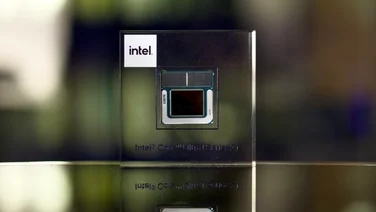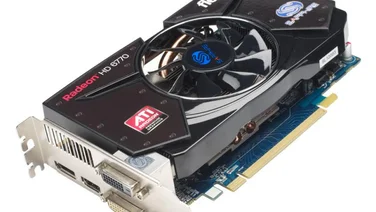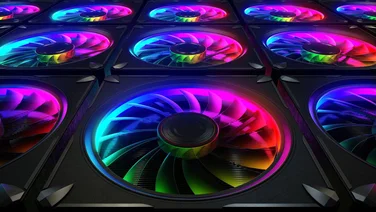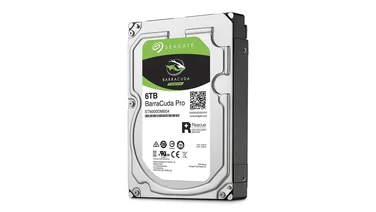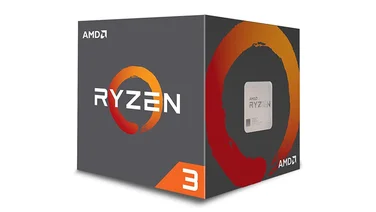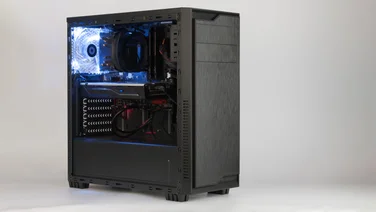To help us provide you with free impartial advice, we may earn a commission if you buy through links on our site. Learn more

- Both are adept at playing mainstream games
- Turing design provides many improvements
- Provide smooth 1080p for most games
- Neither are powerful enough for consistent 1440p resolution
- Both cards lack ray tracing and DLSS
Nvidia has been riding high since the release of its RTX 20-series graphics cards last year, but its latest GPUs are a curious diversion. Not quite “true” GTX cards, as they’re based on the new Turing architecture, but also not RTX cards – as they don’t include the crucial ray tracing and Deep Learning Super Sampling (DLSS) features. These features are enabled on RTX cards by dedicated cores, and those cores simply aren’t included in the GTX 1660 and 1660 Ti. Should you worry about their omission? Perhaps not.
In theory, ray tracing is amazing thanks to more realistic lighting, shadows and reflections. Likewise DLSS, which uses AI to deliver more efficient anti-aliasing, and can claw back some of ray tracing’s performance hit. In reality, ray tracing is only supported by a couple of games. At the time of writing, it’s available in Battlefield V, Metro: Exodus and Shadow of the Tomb Raider, but that’s it. DLSS works in those games, plus Anthem and Final Fantasy XV.
Nvidia has released a driver update that enables ray tracing and DLSS on GTX cards, but it’s only basic ray tracing and won’t work as well because these lesser GPUs lack the dedicated cores and extra horsepower of proper RTX cards. So, with only basic performance updates on the way and minimal game support, it’s not a disaster that the new features won’t be properly implemented on the GTX GPUs.
READ NEXT: Here’s our pick of the best graphics cards you can buy right now
Nvidia GeForce GTX 1660 and GTX 1660 Ti review: Design and setup
There are, on the other hand, obvious advantages of upgrading from Pascal to Turing. First, you reap the benefits of Turing’s improvements to integer, floating-point and shader operation. Rasterisation has taken a big leap forward, while the manufacturing process has been upgraded to 12nm. We can also expect driver and game updates to widen the gap between Turing cards and their predecessors.

Nevertheless, throughput figures demonstrate the lesser ability of the new cards compared to the RTX 20 series. The GTX 1660 and 1660 Ti serve up 5 TFLOPS and 5.4 TFLOPS of single-precision power. The RTX 2060 has 6.4 TFLOPS. And, importantly, these cards aren’t designed for high-end play or an optimum VR experience. Instead, the new GTX cards are built for playing mainstream titles at 1080p and 1440p.
One final note: both new cards use single eight-pin power connectors, and outputs are divided between HDMI and DisplayPort – forget USB Type-C. Both have a 120W TDP, which is level with the GTX 1060 and lower than the GTX 1070 and RTX 2060.
Nvidia GeForce GTX 1660 and GTX 1660 Ti review: Performance
As expected, the new cards proved adept at 1080p. At Shadow of the Tomb Raider’s highest settings, the GTX 1660 averaged 68fps, while the GTX 1660 Ti blitzed through at 79fps. The two cards averaged 51fps and 59fps in Deus Ex: Mankind Divided at 1080p and Ultra settings, and ran Battlefield V at 74fps and 87fps. Minimum frame rates also proved strong at 1080p. Both cards managed 1080p minimums of 40fps or better in most of our games, with scores getting beyond 60fps in some titles.

The only black mark here was Metro: Exodus, where neither the GTX 1660 or 1660 Ti could surpass a 30fps minimum in one particularly intensive scene. It’s one moment in an extremely demanding game, though, and elsewhere the game’s minimums exceeded 40fps. Thankfully, those low frame rates will be rare – and they can be fixed by fiddling with settings. In most modern, single-player games, the cards will deliver smooth minimum and average frame rates at 1080p at high-quality settings.
The GTX 1660 and 1660 Ti will handle any current esports game at triple-figure frame rates without breaking a sweat. And, pleasingly, the GTX 1660 Ti can deliver 100fps-plus performance in older games and current games with moderate graphics settings – which means that those titles will run smoothly on 1080p, 144Hz G-Sync monitors, too.
Unsurprisingly, however, neither card could handle modern games at 1440p without issues. The GTX 1660 Ti returned averages of 39fps in Metro: Exodus and 41fps in Deus Ex with both games at their highest settings, but that card could only manage a 23fps minimum in Metro.
Its Deus Ex minimum of 33fps was better, but you’ll have to dial back the graphics settings to make games run smoothly at 1440p. The GTX 1660 was poorer here. It returned 34fps and 36fps averages in those games, but its minimums slumped to a patchy 20fps and 28fps. The RTX 2060 managed a minimum of 41fps in Deus Ex at 1440p – eight frames beyond the GTX 1660 Ti.
READ NEXT: Here are the best PC cases you can buy right now

In general, the RTX 2060 was between ten and 15 frames quicker than the GTX 1660 Ti and around 20 frames better than the GTX 1660. The GTX 1660 Ti easily outpaces last year’s GTX 1060, with a lead of around 15 frames in most games. The new card sneaks ahead of the GTX 1070 in most games, too. The cheaper GTX 1660 only maintains a slim lead over the GTX 1060 and it can’t outpace the GTX 1070.
Nvidia GeForce GTX 1660 and GTX 1660 Ti review: Verdict
The GTX 1660 and 1660 Ti are adept in key mainstream gaming scenarios. Both will play virtually any single-player title at 1080p, and they’ll run any esports game without trouble. Try trickier tasks, though, and they sometimes struggle. The GTX 1660 Ti runs many games fast enough for 144Hz screens, but the GTX 1660 can’t handle it. Neither are consistently powerful enough for smooth 1440p.
There’s plenty to consider outside of raw performance, too. Neither card has ray tracing or DLSS, and neither will handle them well when their basic versions are enabled by driver updates. If you want those features, the RTX 2060 is a better choice. However, if you’re upgrading from an older card, or want consistent, smooth 1080p gaming at a reasonable price, they’re both good options.
| Nvidia GeForce GTX 1660 specifications | |
|---|---|
| Price | £200 |
| Manufacturing process | 12nm |
| Stream processors | 1,408 |
| Memory | 6GB GDDR58GHz |
| Base clock | 1,530MHz |
| Boost clock | 1,785MHz |
| Nvidia GeForce GTX 1660 Ti specifications | |
|---|---|
| Price | £260 |
| Manufacturing process | 12nm |
| Stream processors | 1,536 |
| Memory | 6GB GDDR6 12GHz |
| Base clock | 1,500MHz |
| Boost clock | 1,770MHz |
